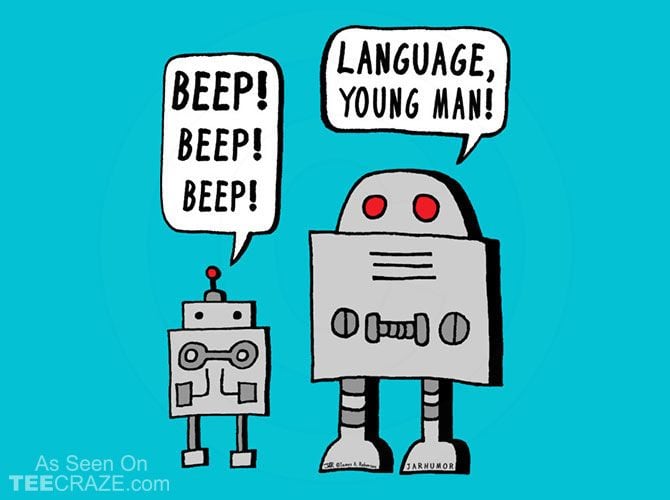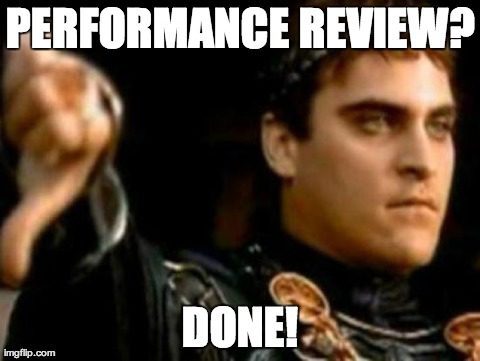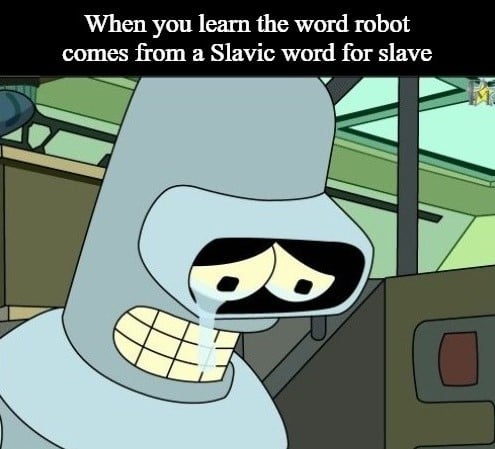With all the hype bubbling around ChatGPT and its not-so-successful competitor, Bard, there are lots of questions arising about how AI can help streamline our current workload.
When it comes to using GPT for HR and recruiting, there are various ways to implement this new technology to drastically improve your productivity and efficiency.
What’s the Fuss About?
The hype surrounding ChatGPT is not unfounded. It’s a serious game changer, and the underlying GPT-3 technology can be integrated into various virtual tools to upgrade their capabilities. Let’s have a quick look at some of the ways you can use GPT for recruiting and HR.
- Speed up the recruitment process
- Streamline onboarding
- Enhancing employee engagement through chatbots
- Evaluate performance
- Increase diversity and inclusion
We’ll go over these 5 ways in more detail in a short while. In particular, GPT-3 can be used to accelerate the recruitment process. There are dozens of things it can do that lead to an overall smoother experience for recruiters and candidates.
Imagine having a software screen resumes, identify strong contendors and automatically summarize their experience. Imagine being able to cut down on interviews with compromising the candidate review process. And what if there was a tool that helped you create job adverts that attract top appliants? You can use GPT-3 for recruitment in all of these ways. AI-powered HR tools can automate and simplify tons of actions, saving you many hours of work.
At this point, there are few recruitment processes that GPT-3 can’t help with. This is amazing news for overworked HR professionals drowning beneath the weight of CVs. In fact, AI HR tools are getting so good, that they’re almost a little creepy.
@tldv.io Written by ChatGPT #inception #chatgpt #ai #openai #meeting #corporate
♬ original sound - tldv.io - AI Meeting Recorder
HR Already Uses AI
It’s worth noting that AI in HR is not a new concept. There are uncountable amounts of tools and softwares available that already implement some kind of artificial intelligence to simplify HR work, from recruitment to onboarding and everything thereafter.
The difference is that more tools than ever are integrating with GPT-3, and the benefits to HR are more remarkable than ever.
Ever heard of Textio? It’s an AI-powered writing tool that helps HR teams improve job descriptions, company policies, and other written communications. The tool analyzes language patterns and makes suggestions to help improve the effectiveness and inclusivity of the content.
There’s also WorkFusion, an AI-powered automation platform that can be used to automate routine HR tasks such as data entry, payroll processing, and benefits administration.
These are just 2 examples of AI HR software that are already being used. We hate to say it but, even if you neglect AI, you can bet your competitors won’t. And with its ability to save you time, money, and energy, the ones utilizing AI will thrive. They’ll attract and retain the best candidates with smoother, more streamlined recruitment processes.
5 Ways GPT Can Help Recruiters and HR Teams
1. Accelerate the Recruitment Process
GPT can be trained to analyze resumes and identify relevant skills, experience, and education that match your job requirements. Because of this powerful feature, HR teams can use GPT to automatically screen resumes and identify qualified candidates, based on the organization’s requirements and role specification.
AI recruiting software can be taken advantage of to find applicants that are the best fit for the available role – quickly. Not only this, but you can use GPT for recruiting to automatically generate summaries of each candidate’s resume or application. This makes the life of a recruiter easier as they no longer have to sift through the entire resume of every single applicant. The best part? You can train GPT to look for certain elements, empowering you to list the resumes by relevance.
You can even use ChatGPT to write job descriptions that express exactly what you need and what the requirements for such a role would be. On top of this, you can even use AI in recruitment to send candidates emails to keep them updated with the process.
AI recruiting software can even be used to headhunt talent from other companies. It’ll help you narrow your scope and hone in on exactly the type of skills that your business needs.
AI Tools for Accelerating the Recruitment Process
Entelo: An AI-powered recruitment platform, Entelo helps recruiters find and engage with top candidates. The platform’s AI analyzes candidate data and provides personalized recommendations for outreach and engagement.
HireVue: A video interviewing platform that helps HR teams screen candidates more efficiently, HireVue’s AI tech will analyze a candidate’s body language during interviews, providing top insights to help HR teams make informed hiring decisions.
tl;dv: An AI meeting assistant geared toward helping you hire employees quickly, tl;dv is a recruiter’s dream. It accelerates the recruitment process by allowing you to record your job interviews and create highlights, allowing stakeholders the opportunity to screen candidates more quickly by jumping to the best bits of the interview. This is easily done via hyperlink and requires no technical knowledge whatsoever.
Additionally, tl;dv uses GPT-3 to speed up recruiting by automatically generating a summary of all the most important points as soon as the meeting is over. It gives you an overview that you can easily use as a recap when searching for candidates.
By making the recruitment process faster, you have a much larger chance of being the candidate’s ‘first offer’ which is, more often than not, the one they’ll accept. The ability to record, transcribe, and create clips from the video drastically reduces the need for follow-up interviews.
Gone are the days where every stakeholder in the business needs to meet a candidate via interview. Now, they can just check what they’re like from their previous interviews, monitoring their responses, attitude, and body language as if they were there themselves. It’ll allow you to reduce bias by letting more team members weigh in with minimum demand on their time.
Not only is tl;dv a fantastic digital interview tool for recruiters, it’s also great for the candidates. You can make the recording available to candidates as well so they can revisit any time and make sure they didn’t forget to mention anything crucial. This is also a great way to leave feedback to a candidate, by using tl;dv’s built-in note taking feature.
2. Employee Onboarding
If using GPT to make recruitment faster wasn’t enough, what about to speed up and improve the onboarding experience? GPT can develop personalized onboarding plans for new employees that will streamline the entire process and make it more efficient.
By analyzing the new employee’s resume, the job requirements, and company policies, GPT can generate a customized plan that outlines the specific tasks and training that the new employee needs to complete during their first few weeks on the job. This new approach to onboarding is invaluable. Not only does it make your life easier, but it makes the successful candidate’s life a whole lot easier too.
You can even use GPT to create interactive onboarding materials such as videos, quizzes, and simulations that can engage and educate new employees in a more interactive and personalized way. To top it all off, these materials can be customized based on the new hire’s role, experience level, and learning style! This ensures that they receive the information and training they need to succeed in their new role.
By catering your onboarding process to each specific employee, you’re sure to make it far more efficient for everyone involved. Plus, this more personalized and engaging experience can lead to higher employee satisfaction and retention. Ultimately, it will bubble down through every facet of your business.
AI Tools for Employee Onboarding
IBM Watson Talent: An AI-powered platform for HR teams, IBM Watson Talent helps streamline recruitment, onboarding, and employee engagement. The AI analyzes HR data to provide insights that can help boost the employee experience.
3. Employee Engagement and Chatbots
While ChatGPT itself is a chatbot, the underlying technology of GPT-3 can be used by any business to create their own personalized chatbot. You might also consider it as a virtual assistant. When programmed with your business needs, it can find ways to engage with employees and improve their experience. In fact, there’s not much GPT can’t do. It can even tell jokes, though they’re admittedly pretty terrible…
@tldv.io ChatGPT can be a bit mean #chatgpt #ai #openai #tech #startup #corporate #product #bisops #sales
♬ original sound - tldv.io - AI Meeting Recorder
By offering personalized recommendations on training, mentorship, and other development opportunities, GPT can bolster your workforce and increase satisfaction at the workplace, whether that be in office or remote.
The best part about using GPT for employee engagement is that it can be trained to understand natural language queries, and respond with relevant information in a conversational manner. Basically, it won’t sound like a robot.

AI Tools for Employee Engagement
PredictiveHire: An AI chatbot that engages with the candidate during the hiring process might sound like something straight outta the future, but you’ll find this powerful feature with PredictiveHire. It can also provide personalized recommendations for training and development opportunities.
Text IQ: Another AI-powered platform for employee communications and identifying potential compliance risks, Text IQ uses natural language processing and machine learning to detect patterns and anomalies in employee communications, and then offer solutions.
4. Performance Evaluation
Use GPT to analyze employee performance data and identify patterns that can help HR teams make informed decisions about promotions, bonuses, and other rewards. This one sounds like a super simple solution. It’s yet another way in which using GPT in HR can save tons of time and resources.

AI Tools for Performance Evaluation
ADP Datacloud: This AI-powered analytics platform that can be used by HR teams to analyze employee performance data and identify patterns. It provides insights into factors that may be affecting employee performance, such as training and development opportunities, work-life balance, and job satisfaction.
Keka: Similar to ADP Datacloud, Keka can be used for performance management and evaluation. It also analyzes employee data to provide insights into areas where employees may need additional training or support.
5. Diversity and Inclusion
Yes, GPT can even be used to provide data on how the company can improve with regards to diversity and inclusion in the workforce. For example, GPT can be trained to identify patterns in recruitment practices or employee retention rates that suggest bias or discrimination.
Essentially, any aspect of HR that requires data analysis, GPT can swiftly simplify it for you. This is the fundamental reason as to why GPT in HR and recruiting is such a game changer.
AI Tools for Diversity and Inclusion
SymbaSync: An AI-powered talent matching platform, SymbaSync is more than just a catchy name. It can be used to promote diversity and inclusion in hiring by analyzing candidate data and providing personalized recommendations for candidates who may be a good fit for the organization.
Plum: Not to be confused with the delicious fruit, Plum is an AI-driven platform that helps you reduce bias and improve diversity in the hiring process.
The Future of Human Resources
With so many crazy advancements in AI, it’s easy to get carried away and assume that it’ll take over everything. For the foreseeable future, that’s not the case.
A GPT tool is useless without anybody to ask it questions or program it with data. There still needs to be humans to operate AI. While it could well change a number of positions in big ways, it is unlikely to eradicate the need for humans in HR. They’d have to rename it to AI Resources then.
Similarly, with GPT meeting tools, they make meetings between humans easier. The humans still need to meet for an AI meeting assistant like tl;dv to make sense.
Will AI Replace Recruiters?
AI definitely has the potential to automate some of the more tedious and time-consuming aspects of recruiting. In fact, it’s already doing it. However, it’s unlikely to replace recruiters entirely. There are many aspects of recruiting that require human judgment and decision-making, such as building relationships with candidates, assessing soft skills, and evaluating cultural fit.
It boils down to this: AI is not capable of replicating the nuanced and complex interactions that are often necessary for successful recruiting. It can analyze data and offer suggestions, but its head is stuck in the digital world, while recruiting requires a certain level of human interaction.
No company run by competent people would ever trust AI alone to make a recruitment decision. AI is here to serve us and make our lives easier. While it will definitely make some jobs null and void, recruitment is unlikely to be one of them.






